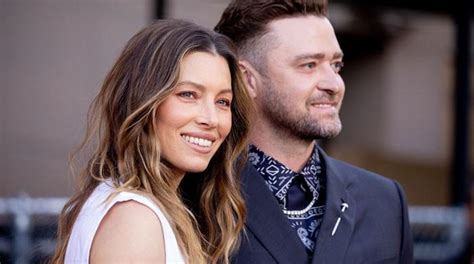
Amanda Bynes, the former Nickelodeon star, has unveiled a striking new look, showcasing a prominent tattoo of an intricate design on her face and a fresh hair transformation, marking a significant style evolution following her departure from the OnlyFans platform.
Amanda Bynes is making headlines once again, this time not for legal battles or personal struggles, but for a bold and transformative style evolution. The former child star, who rose to fame on Nickelodeon in the late 1990s and early 2000s, has debuted a striking new facial tattoo and a fresh hairstyle, signaling a potential new chapter in her life. The makeover follows her recent venture into, and subsequent departure from, the subscription-based content platform OnlyFans, leaving fans and the public alike curious about what prompted the dramatic change.
Bynes, now 38, revealed the new ink and hairstyle via her social media channels, offering a glimpse into what appears to be a conscious effort to redefine her public image. The tattoo, a delicate and detailed design, is prominently placed on her face, drawing immediate attention and sparking widespread discussion. Coupled with the updated hairstyle, the overall effect is a stark departure from her earlier, more conventionally “Hollywood” look.
The specific details surrounding the tattoo – its meaning, the artist behind it, and the process involved – remain largely undisclosed by Bynes herself. However, the visual impact is undeniable, prompting speculation about the motivations behind the decision. Is it a symbol of personal growth, a statement of independence, or simply an artistic expression? These are some of the questions swirling around the internet as fans and media outlets dissect the transformation.
Bynes’s journey in the public eye has been far from smooth. After achieving significant success as a young actress, she faced a series of personal challenges that led to a highly publicized downward spiral. Legal troubles, mental health issues, and erratic behavior became regular features in tabloid headlines, overshadowing her earlier accomplishments. In recent years, Bynes has gradually begun to rebuild her life, focusing on her health, education, and personal well-being. Her foray into cosmetology school, for instance, indicated a desire to pursue a career outside of acting.
The decision to join OnlyFans earlier this year was initially met with mixed reactions. Some saw it as a potentially empowering way for Bynes to control her own narrative and generate income, while others expressed concern that it could be a step backward, potentially exploiting her past vulnerabilities. Her subsequent departure from the platform, without a clear explanation, only added to the intrigue.
This latest transformation, the tattoo and hairstyle reveal, is being interpreted by many as a sign that Bynes is continuing to evolve and redefine herself on her own terms. Whether it’s a calculated move or a spontaneous expression of self, it underscores her determination to break free from the constraints of her past and forge a new identity. The public response has been varied, ranging from supportive messages celebrating her individuality to critical comments questioning her choices.
One of the most significant aspects of this story is the broader context of Bynes’s personal struggles and her ongoing efforts to rebuild her life. Her journey resonates with many who have faced their own challenges and are striving for personal growth and redemption. The public’s fascination with her story stems not only from her celebrity status but also from the human element of resilience and the desire to overcome adversity.
The source article from Yahoo! Entertainment provides factual details about the timeline of events, confirming the recent unveiling of the tattoo and hairstyle, and highlighting the connection to her brief stint on OnlyFans. It also alludes to her past struggles and the public’s ongoing interest in her well-being.
The new look has undeniably sparked a conversation about body art, self-expression, and the challenges faced by former child stars navigating adulthood. It serves as a reminder that celebrities, despite their public personas, are individuals with complex lives and personal journeys. As Amanda Bynes continues on her path of self-discovery, the world will undoubtedly be watching, hoping for a positive outcome. The tattoo and hairstyle are not just aesthetic changes; they represent a potential turning point in her life, a symbol of her determination to reclaim her narrative and embrace a future defined by her own choices. The public’s reaction, while varied, underscores the enduring fascination with Bynes’s story and the collective hope that she will find lasting peace and happiness. The entertainment industry, often unforgiving, has witnessed numerous young stars struggle with the pressures of fame. Bynes’s journey is a stark reminder of the importance of mental health support and the need for compassion when dealing with individuals navigating personal challenges in the public eye.
The details of her future plans remain uncertain, but one thing is clear: Amanda Bynes is not afraid to challenge expectations and redefine herself. Her latest transformation, the bold ink and hairstyle, is a testament to her resilience and her determination to live life on her own terms.
Expanded Details and Context:
Amanda Bynes’s career began at a young age, landing roles in Nickelodeon’s “All That” and later headlining her own sketch comedy show, “The Amanda Show.” Her comedic talent and infectious personality quickly made her a household name among young audiences. She transitioned to film, starring in popular movies like “What a Girl Wants,” “She’s the Man,” and “Hairspray,” solidifying her status as a rising star in Hollywood.
However, behind the scenes, Bynes was struggling with personal demons. As her fame grew, she began to grapple with mental health issues and substance abuse problems. Her behavior became increasingly erratic, leading to legal troubles and a highly publicized breakdown. In 2012, she was arrested for driving under the influence, and subsequent incidents further fueled concerns about her well-being.
Bynes’s struggles played out in the public eye, with tabloid headlines documenting her every move. She faced intense scrutiny and judgment, which only exacerbated her mental health challenges. In 2013, she was placed under a conservatorship, with her mother, Lynn Bynes, appointed as her legal guardian. The conservatorship was initially intended to provide Bynes with the support and structure she needed to address her mental health issues and regain control of her life.
During the conservatorship, Bynes underwent treatment for bipolar disorder and other mental health conditions. She also pursued educational opportunities, enrolling in fashion school and later cosmetology school. These efforts signaled a desire to build a more stable and fulfilling life for herself outside of the entertainment industry.
In 2022, after nearly nine years, the conservatorship was terminated by a judge, granting Bynes greater autonomy over her personal and financial affairs. The decision was based on reports from medical professionals and legal experts who determined that Bynes was capable of managing her own affairs. The termination of the conservatorship was widely celebrated as a positive step forward in Bynes’s recovery journey.
Following the end of the conservatorship, Bynes began exploring new avenues for personal and professional growth. Her decision to join OnlyFans was met with both support and criticism. Some viewed it as a way for her to reclaim her agency and generate income on her own terms, while others expressed concerns that it could expose her to further exploitation.
Bynes’s stint on OnlyFans was relatively brief. She created an account and shared some content, but ultimately decided to leave the platform. The reasons for her departure remain unclear, but it is possible that she found it to be incompatible with her long-term goals or that she faced challenges in managing the platform’s demands.
The recent unveiling of her facial tattoo and new hairstyle marks another chapter in Bynes’s ongoing journey of self-discovery and transformation. The tattoo, in particular, has sparked intense interest and speculation. Facial tattoos are often seen as bold and permanent statements of identity, suggesting that Bynes is embracing a new sense of self-expression.
The design of the tattoo itself is intricate and eye-catching. While its specific meaning remains undisclosed, it is likely to hold personal significance for Bynes. The choice of placement on her face further amplifies its impact, signaling a willingness to challenge conventional beauty standards and embrace her individuality.
The hairstyle, while less dramatic than the tattoo, also contributes to Bynes’s overall transformation. It complements the tattoo and enhances her overall aesthetic, suggesting a cohesive and deliberate approach to her personal style.
The public response to Bynes’s new look has been mixed. Some fans have praised her for her bravery and self-expression, while others have expressed concern that it could be a sign of underlying issues. The mixed reactions highlight the complexities of celebrity culture and the challenges faced by individuals who are constantly under public scrutiny.
Bynes’s story is a reminder that fame and fortune do not guarantee happiness or well-being. It also underscores the importance of mental health support and the need for compassion when dealing with individuals who are struggling with personal challenges.
As Bynes continues on her path of recovery and self-discovery, it is important to respect her choices and provide her with the space and support she needs to thrive. Her journey is an inspiration to many who have faced their own challenges and are striving for personal growth and resilience.
The Broader Context of Child Stardom and Mental Health:
Amanda Bynes’s story is, unfortunately, not unique. The entertainment industry has a long history of child stars who have struggled with the pressures of fame, leading to mental health issues, substance abuse, and personal turmoil.
The transition from childhood to adulthood can be particularly challenging for young stars, who often face unrealistic expectations, intense scrutiny, and a lack of privacy. They may also struggle with identity formation, as their public persona often overshadows their true selves.
The constant attention and pressure to maintain a perfect image can take a toll on their mental health, leading to anxiety, depression, and other mental health conditions. Substance abuse is also a common coping mechanism for dealing with the stresses of fame.
Many former child stars have spoken out about their experiences, highlighting the need for greater support and resources for young people in the entertainment industry. They have also advocated for more responsible media coverage that focuses on their well-being rather than sensationalizing their struggles.
The entertainment industry has a responsibility to create a more supportive and nurturing environment for young stars. This includes providing access to mental health services, offering mentorship programs, and promoting responsible media coverage.
By addressing these issues, the industry can help prevent future tragedies and ensure that young stars have the opportunity to thrive both personally and professionally. Amanda Bynes’s story serves as a powerful reminder of the importance of these efforts. The journey she’s taken highlights the need for constant self-reflection, access to resources, and support from loved ones during challenging times. The public can also contribute to a healthier environment by being mindful of their comments, avoiding judgment, and offering compassion and understanding.
The Role of Social Media in Celebrity Culture:
Social media has fundamentally changed the relationship between celebrities and the public. It has given celebrities a direct line of communication with their fans, allowing them to control their own narratives and share their personal lives in real time.
However, social media also has its downsides. It can be a breeding ground for negativity, with celebrities often facing criticism, harassment, and even threats. The constant scrutiny and pressure to maintain a perfect online image can take a toll on their mental health.
Amanda Bynes’s use of social media has been both positive and negative. She has used it to connect with her fans, share updates on her life, and express her creativity. However, she has also faced criticism and negativity on social media, which has likely contributed to her struggles.
As social media continues to evolve, it is important for celebrities to develop healthy strategies for managing their online presence. This includes setting boundaries, prioritizing their mental health, and seeking support from trusted friends and family.
The public also has a role to play in creating a more positive and supportive online environment. By being mindful of their comments, avoiding judgment, and offering compassion and understanding, they can help celebrities navigate the challenges of social media and maintain their well-being.
The Legal and Ethical Considerations of Conservatorships:
Conservatorships, like the one Amanda Bynes was under for nearly nine years, are legal arrangements in which a court appoints a guardian to manage the personal and/or financial affairs of an individual who is deemed incapable of doing so themselves.
Conservatorships are typically established for individuals with severe mental health issues, cognitive impairments, or other conditions that prevent them from making sound decisions. While conservatorships can be beneficial in protecting vulnerable individuals, they also raise important legal and ethical considerations.
One of the main concerns about conservatorships is the potential for abuse of power. Conservators have a significant amount of control over the conservatee’s life, and there is a risk that they could exploit or neglect them. It’s crucial that regular oversight by the courts is maintained.
Another concern is the impact on the conservatee’s autonomy and freedom. Conservatorships can restrict the conservatee’s ability to make their own decisions, which can be frustrating and disempowering.
In recent years, there has been growing scrutiny of conservatorships, particularly in the wake of Britney Spears’s highly publicized legal battle to end her conservatorship. Spears alleged that her conservatorship was abusive and that she was denied basic human rights.
Spears’s case has sparked a broader debate about the need for reform of conservatorship laws. Advocates are calling for greater transparency, accountability, and due process protections for conservatees.
Amanda Bynes’s conservatorship was ultimately terminated after a judge determined that she was capable of managing her own affairs. The decision was based on reports from medical professionals and legal experts who concluded that Bynes had made significant progress in her recovery and was able to make sound decisions about her life. Her release was celebrated as a win for self-determination and personal growth.
The legal framework surrounding conservatorships needs to be carefully considered and implemented to ensure the protection and well-being of vulnerable individuals while respecting their rights and autonomy. The Bynes and Spears cases have highlighted the complexities and potential pitfalls of conservatorships, underscoring the need for ongoing reform and oversight.
The Importance of Compassion and Understanding:
Ultimately, Amanda Bynes’s story is a reminder of the importance of compassion and understanding. She has faced significant challenges in her life, and she deserves to be treated with respect and empathy.
The public’s reaction to her struggles has often been harsh and judgmental. Tabloid headlines have sensationalized her personal issues, and social media users have subjected her to criticism and ridicule.
It is important to remember that Bynes is a human being with feelings, and that her struggles are not entertainment. She deserves to be given the space and support she needs to heal and rebuild her life.
By offering compassion and understanding, we can help create a more supportive and nurturing environment for individuals who are struggling with mental health issues and other personal challenges. Amanda Bynes’s journey is an inspiration to many, and her story serves as a reminder that recovery is possible with the right support and resources. It reinforces the importance of offering empathy and understanding, especially in a world that often thrives on sensationalism and judgment.
Frequently Asked Questions (FAQ):
1. What is the significance of Amanda Bynes’s new facial tattoo?
The significance of Amanda Bynes’s facial tattoo is largely speculative, as she has not publicly disclosed its meaning. However, facial tattoos are often seen as bold statements of self-expression and identity. Given Bynes’s past struggles and ongoing journey of self-discovery, the tattoo could be interpreted as a symbol of her embracing a new sense of self, challenging conventional beauty standards, and reclaiming her narrative. The act of getting such a visible and permanent marking suggests a desire to make a statement about her identity and independence.
2. Why did Amanda Bynes join and then leave OnlyFans?
Amanda Bynes’s reasons for joining and subsequently leaving OnlyFans are not entirely clear. It’s possible she initially viewed the platform as a way to control her own image, generate income, and connect with fans on her own terms, especially after the termination of her conservatorship. However, she may have found the platform incompatible with her long-term goals, faced challenges managing the content and expectations, or encountered issues with the platform’s community. The abrupt departure without a clear explanation leaves room for speculation, but it suggests that the experience did not align with her expectations or personal boundaries.
3. What were the key reasons for Amanda Bynes’s conservatorship, and why was it terminated?
Amanda Bynes’s conservatorship was initially established due to concerns about her mental health and erratic behavior. Legal troubles and public incidents raised serious questions about her ability to care for herself and manage her affairs. The conservatorship provided her with the support and structure needed to address her mental health issues and regain stability. It was terminated in 2022 after medical professionals and legal experts determined that she had made significant progress in her recovery, demonstrated the capacity to make sound decisions, and was capable of managing her personal and financial affairs independently. The termination marked a positive step in her journey toward autonomy and self-determination.
4. How has Amanda Bynes’s mental health journey been perceived by the public and the media?
Amanda Bynes’s mental health journey has been met with mixed reactions from the public and the media. Initially, her struggles were often sensationalized and exploited by tabloids, contributing to a cycle of negative attention and judgment. However, as awareness of mental health issues has grown, there has been a shift towards greater empathy and understanding. Many fans and media outlets now recognize the importance of providing support and compassion to individuals facing mental health challenges. The public discourse surrounding her journey reflects a broader societal evolution in how mental health is perceived and discussed, moving away from stigma and towards greater acceptance and support.
5. What are some of the long-term challenges faced by former child stars like Amanda Bynes?
Former child stars like Amanda Bynes often face a unique set of long-term challenges. These include difficulties transitioning from childhood to adulthood under intense public scrutiny, struggles with identity formation as their public persona often overshadows their true selves, and the pressure to maintain a perfect image. They may also experience mental health issues, substance abuse problems, and difficulties managing their finances and careers. The entertainment industry’s demanding environment can take a toll on their well-being, making it essential for them to have access to resources, support systems, and opportunities for personal growth outside of the spotlight. The transition to a “normal” life can be difficult after being in the public eye from a young age.









